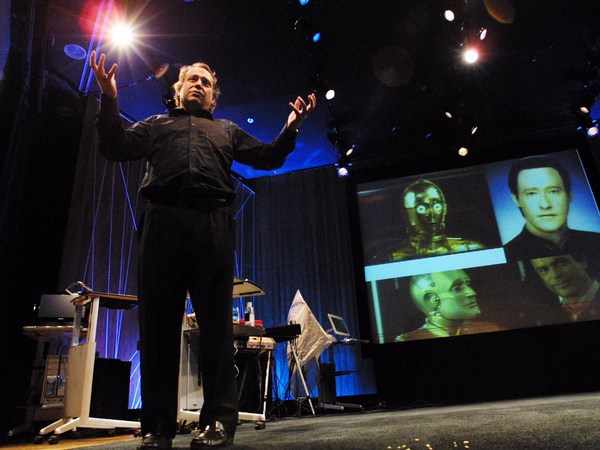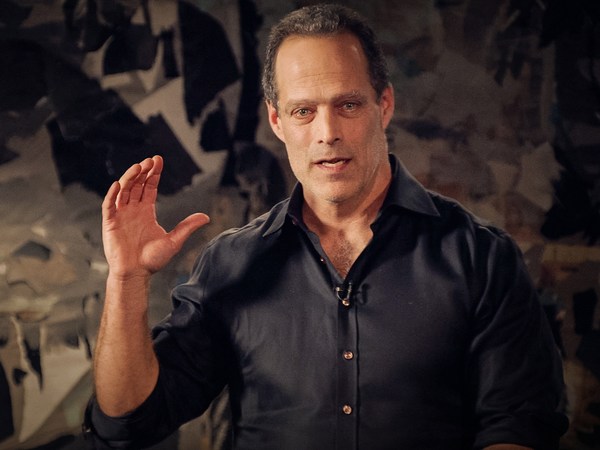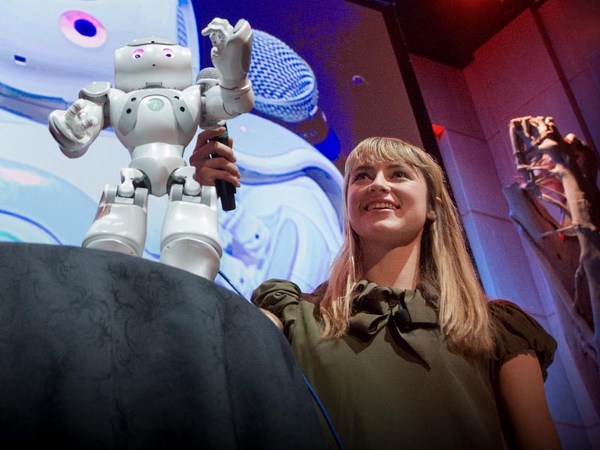I thought I'd begin with a scene of war. There was little to warn of the danger ahead. The Iraqi insurgent had placed the IED, an Improvised Explosive Device, along the side of the road with great care. By 2006, there were more than 2,500 of these attacks every single month, and they were the leading cause of casualties among American soldiers and Iraqi civilians. The team that was hunting for this IED is called an EOD team— Explosives Ordinance Disposal—and they're the pointy end of the spear in the American effort to suppress these roadside bombs. Each EOD team goes out on about 600 of these bomb calls every year, defusing about two bombs a day. Perhaps the best sign of how valuable they are to the war effort, is that the Iraqi insurgents put a $50,000 bounty on the head of a single EOD soldier.
Unfortunately, this particular call would not end well. By the time the soldier advanced close enough to see the telltale wires of the bomb, it exploded in a wave of flame. Now, depending how close you are and how much explosive has been packed into that bomb, it can cause death or injury. You have to be as far as 50 yards away to escape that. The blast is so strong it can even break your limbs, even if you're not hit. That soldier had been on top of the bomb.
And so when the rest of the team advanced they found little left. And that night the unit's commander did a sad duty, and he wrote a condolence letter back to the United States, and he talked about how hard the loss had been on his unit, about the fact that they had lost their bravest soldier, a soldier who had saved their lives many a time. And he apologized for not being able to bring them home. But then he talked up the silver lining that he took away from the loss. "At least," as he wrote, "when a robot dies, you don't have to write a letter to its mother."
That scene sounds like science fiction, but is battlefield reality already. The soldier in that case was a 42-pound robot called a PackBot. The chief's letter went, not to some farmhouse in Iowa like you see in the old war movies, but went to the iRobot Company, which is named after the Asimov novel and the not-so-great Will Smith movie, and... um... (Laughter)... if you remember that in that fictional world, robots started out carrying out mundane chores, and then they started taking on life-and-death decisions. That's a reality we face today.
What we're going to do is actually just flash a series of photos behind me that show you the reality of robots used in war right now or already at the prototype stage. It's just to give you a taste. Another way of putting it is you're not going to see anything that's powered by Vulcan technology, or teenage wizard hormones or anything like that. This is all real. So why don't we go ahead and start those pictures.
Something big is going on in war today, and maybe even the history of humanity itself. The U.S. military went into Iraq with a handful of drones in the air. We now have 5,300. We went in with zero unmanned ground systems. We now have 12,000. And the tech term "killer application" takes on new meaning in this space.
And we need to remember that we're talking about the Model T Fords, the Wright Flyers, compared to what's coming soon. That's where we're at right now. One of the people that I recently met with was an Air Force three-star general, and he said basically, where we're headed very soon is tens of thousands of robots operating in our conflicts, and these numbers matter, because we're not just talking about tens of thousands of today's robots, but tens of thousands of these prototypes and tomorrow's robots, because of course, one of the things that's operating in technology is Moore's Law, that you can pack in more and more computing power into those robots, and so flash forward around 25 years, if Moore's Law holds true, those robots will be close to a billion times more powerful in their computing than today.
And so what that means is the kind of things that we used to only talk about at science fiction conventions like Comic-Con have to be talked about in the halls of power and places like the Pentagon. A robots revolution is upon us.
Now, I need to be clear here. I'm not talking about a revolution where you have to worry about the Governor of California showing up at your door, a la the Terminator. (Laughter)
When historians look at this period, they're going to conclude that we're in a different type of revolution: a revolution in war, like the invention of the atomic bomb. But it may be even bigger than that, because our unmanned systems don't just
affect the "how" of war-fighting, they affect the "who" of fighting at its most fundamental level. That is, every previous revolution in war, be it the machine gun, be it the atomic bomb, was about a system that either shot faster, went further, had a bigger boom. That's certainly the case with robotics, but they also change the experience of the warrior and even the very identity of the warrior.
Another way of putting this is that mankind's 5,000-year-old monopoly on the fighting of war is breaking down in our very lifetime. I've spent the last several years going around meeting with all the players in this field, from the robot scientists to the science fiction authors who inspired them to the 19-year-old drone pilots who are fighting from Nevada, to the four-star generals who command them, to even the Iraqi insurgents who they are targeting and what they think about our systems, and what I found interesting is not just their stories, but how their experiences point to these ripple effects that are going outwards in our society, in our law and our ethics, etc. And so what I'd like to do with my remaining time is basically flesh out a couple of these.
So the first is that the future of war, even a robotics one, is not going to be purely an American one. The U.S. is currently ahead in military robotics right now, but we know that in technology there's no such thing as a permanent first move or advantage. In a quick show of hands, how many people in this room still use Wang Computers? (Laughter) It's the same thing in war. The British and the French invented the tank. The Germans figured out how to use it right, and so what we have to think about for the U.S. is that we are ahead right now, but you have 43 other countries out there working on military robotics, and they include all the interesting countries like Russia, China, Pakistan, Iran.
And this raises a bigger worry for me. How do we move forward in this revolution given the state of our manufacturing and the state of our science and mathematics training in our schools? Or another way of thinking about this is, what does it mean to go to war increasingly with soldiers whose hardware is made in China and software is written in India?
But just as software has gone open-source, so has warfare. Unlike an aircraft carrier or an atomic bomb, you don't need a massive manufacturing system to build robotics. A lot of it is off the shelf. A lot of it's even do-it-yourself. One of those things you just saw flashed before you was a raven drone, the handheld tossed one. For about a thousand dollars, you can build one yourself, equivalent to what the soldiers use in Iraq.
That raises another wrinkle when it comes to war and conflict. Good guys might play around and work on these as hobby kits, but so might bad guys. This cross between robotics and things like terrorism is going to be fascinating and even disturbing, and we've already seen it start.
During the war between Israel, a state, and Hezbollah, a non-state actor, the non-state actor flew four different drones against Israel. There's already a jihadi website that you can go on and remotely detonate an IED in Iraq while sitting at your home computer.
And so I think what we're going to see is two trends take place with this. First is, you're going to reinforce the power of individuals against governments, but then the second is that we are going to see an expansion in the realm of terrorism. The future of it may be a cross between al Qaeda 2.0 and the next generation of the Unabomber. And another way of thinking about this is the fact that, remember, you don't have to convince a robot that they're gonna receive 72 virgins after they die to convince them to blow themselves up.
But the ripple effects of this are going to go out into our politics. One of the people that I met with was a former Assistant Secretary of Defense for Ronald Reagan, and he put it this way: "I like these systems because they save American lives, but I worry about more marketization of wars, more shock-and-awe talk, to defray discussion of the costs. People are more likely to support the use of force if they view it as costless."
Robots for me take certain trends that are already in play in our body politic, and maybe take them to their logical ending point. We don't have a draft. We don't have declarations of war anymore. We don't buy war bonds anymore. And now we have the fact that we're converting more and more of our American soldiers that we would send into harm's way into machines, and so we may take those already lowering bars to war and drop them to the ground.
But the future of war is also going to be a YouTube war. That is, our new technologies don't merely remove humans from risk. They also record everything that they see. So they don't just delink the public: they reshape its relationship with war. There's already several thousand video clips of combat footage from Iraq on YouTube right now, most of it gathered by drones.
Now, this could be a good thing. It could be building connections between the home front and the war front as never before. But remember, this is taking place in our strange, weird world, and so inevitably the ability to download these video clips to, you know, your iPod or your Zune gives you the ability to turn it into entertainment.
Soldiers have a name for these clips. They call it war porn. The typical one that I was sent was an email that had an attachment of video of a Predator strike taking out an enemy site. Missile hits, bodies burst into the air with the explosion. It was set to music. It was set to the pop song "I Just Want To Fly" by Sugar Ray.
This ability to watch more but experience less creates a wrinkle in the public's relationship with war. I think about this with a sports parallel. It's like the difference between watching an NBA game, a professional basketball game on TV, where the athletes are tiny figures on the screen, and being at that basketball game in person and realizing what someone seven feet really does look like.
But we have to remember, these are just the clips. These are just the ESPN SportsCenter version of the game. They lose the context. They lose the strategy. They lose the humanity. War just becomes slam dunks and smart bombs.
Now the irony of all this is that while the future of war may involve more and more machines, it's our human psychology that's driving all of this, it's our human failings that are leading to these wars.
So one example of this that has big resonance in the policy realm is how this plays out on our very real war of ideas that we're fighting against radical groups. What is the message that we think we are sending with these machines versus what is being received in terms of the message.
So one of the people that I met was a senior Bush Administration official, who had this to say about our unmanning of war: "It plays to our strength. The thing that scares people is our technology." But when you go out and meet with people, for example in Lebanon, it's a very different story. One of the people I met with there was a news editor, and we're talking as a drone is flying above him, and this is what he had to say. "This is just another sign of the coldhearted cruel Israelis and Americans, who are cowards because they send out machines to fight us. They don't want to fight us like real men, but they're afraid to fight, so we just have to kill a few of their soldiers to defeat them."
The future of war also is featuring a new type of warrior, and it's actually redefining the experience of going to war. You can call this a cubicle warrior. This is what one Predator drone pilot described of his experience fighting in the Iraq War while never leaving Nevada. "You're going to war for 12 hours, shooting weapons at targets, directing kills on enemy combatants, and then you get in the car and you drive home and within 20 minutes, you're sitting at the dinner table talking to your kids about their homework."
Now, the psychological balancing of those experiences is incredibly tough, and in fact those drone pilots have higher rates of PTSD than many of the units physically in Iraq. But some have worries that this disconnection will lead to something else, that it might make the contemplation of war crimes a lot easier when you have this distance. "It's like a video game," is what one young pilot described to me of taking out enemy troops from afar. As anyone who's played Grand Theft Auto knows, we do things in the video world that we wouldn't do face to face.
So much of what you're hearing from me is that there's another side to technologic revolutions, and that it's shaping our present and maybe will shape our future of war. Moore's Law is operative, but so's Murphy's Law. The fog of war isn't being lifted. The enemy has a vote.
We're gaining incredible new capabilities, but we're also seeing and experiencing new human dilemmas. Now, sometimes these are just "oops" moments, which is what the head of a robotics company described it, you just have "oops" moments. Well, what are "oops" moments with robots in war? Well, sometimes they're funny. Sometimes, they're like that scene from the Eddie Murphy movie "Best Defense," playing out in reality, where they tested out a machine gun-armed robot, and during the demonstration it started spinning in a circle and pointed its machine gun at the reviewing stand of VIPs. Fortunately the weapon wasn't loaded and no one was hurt, but other times "oops" moments are tragic, such as last year in South Africa, where an anti-aircraft cannon had a "software glitch," and actually did turn on and fired, and nine soldiers were killed.
We have new wrinkles in the laws of war and accountability. What do we do with things like unmanned slaughter? What is unmanned slaughter? We've already had three instances of Predator drone strikes where we thought we got bin Laden, and it turned out not to be the case. And this is where we're at right now. This is not even talking about armed, autonomous systems with full authority to use force. And do not believe that that isn't coming. During my research I came across four different Pentagon projects on different aspects of that.
And so you have this question: what does this lead to issues like war crimes? Robots are emotionless, so they don't get upset if their buddy is killed. They don't commit crimes of rage and revenge. But robots are emotionless. They see an 80-year-old grandmother in a wheelchair the same way they see a T-80 tank: they're both just a series of zeroes and ones. And so we have this question to figure out: How do we catch up our 20th century laws of war, that are so old right now that they could qualify for Medicare, to these 21st century technologies?
And so, in conclusion, I've talked about what seems the future of war, but notice that I've only used real world examples and you've only seen real world pictures and videos. And so this sets a great challenge for all of us that we have to worry about well before you have to worry about your Roomba sucking the life away from you. Are we going to let the fact that what's unveiling itself right now in war sounds like science fiction and therefore keeps us in denial? Are we going to face the reality of 21st century war? Is our generation going to make the same mistake that a past generation did with atomic weaponry, and not deal with the issues that surround it until Pandora's box is already opened up?
Now, I could be wrong on this, and one Pentagon robot scientist told me that I was. He said, "There's no real social, ethical, moral issues when it comes to robots. That is," he added, "unless the machine kills the wrong people repeatedly. Then it's just a product recall issue."
And so the ending point for this is that actually, we can turn to Hollywood. A few years ago, Hollywood gathered all the top characters and created a list of the top 100 heroes and top 100 villains of all of Hollywood history, the characters that represented the best and worst of humanity. Only one character made it onto both lists: The Terminator, a robot killing machine. And so that points to the fact that our machines can be used for both good and evil, but for me it points to the fact that there's a duality of humans as well.
This week is a celebration of our creativity. Our creativity has taken our species to the stars. Our creativity has created works of arts and literature to express our love. And now, we're using our creativity in a certain direction, to build fantastic machines with incredible capabilities, maybe even one day an entirely new species. But one of the main reasons that we're doing that is because of our drive to destroy each other, and so the question we all should ask: is it our machines, or is it us that's wired for war?
Thank you. (Applause)





